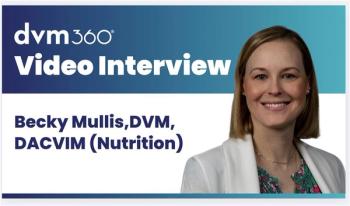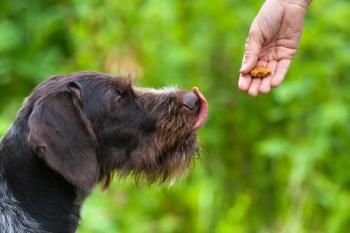
Owners and Pets Exercising Together study
In this study, dog owners presenting to a veterinary referral center are invited to participate.
The goals of the Owners and Pets Exercising Together (OPET) study are to evaluate the relationship of the pet owner's weight and that of his or her dog, to determine the extent to which routine counseling provided by veterinarians and targeted toward dogs results in increased physical activity in both dogs and owners, and to determine the extent to which the level of attachment to a dog impacts social support and health promotion activities such as physical activity.
Study overview
In the OPET study, dog owners presenting to a veterinary referral center are invited to participate. Once enrolled in the study, dogs undergo an initial assessment that includes a physical examination with a nine-point body condition score (BCS) system and laboratory tests to evaluate select metabolic markers of disease.1
In phase 1 of the study, pet owners in both groups receive an activity-monitoring log and pedometer and an assessment that includes height and weight measurement and laboratory tests to assess select markers of disease (lipid profile and glycemic markers) in people.
In phase 2 of the study, participants are randomly assigned to one of two interventions—either standard care or an increased physical activity intervention. Only those owners in the physical activity group are given specific instructions by veterinarians to increase their dogs' activity level. All owners are asked to return with their dogs in three months for reevaluation.
Preliminary findings
Preliminary data from the OPET study were presented at the 18th Annual Conference of the International Society for Anthrozoology in Kansas City, Mo., in October 2009. At that time, 40 pet owners with 40 dogs had enrolled in the study, and 24 owners and dogs had completed the study.
DEAN GOLJA/GETTY IMAGES
The mean age of the dogs was 7 years (± 3.9 years). Mean BCS of the 28 dogs in phase 1 was 5.98 (± 1.17). Among the 12 dogs that had complete data for phase 1 and phase 2, their mean BCS was 6.58 (± 0.67) at phase 1 and their mean BCS at the end of phase 2 was 6.17 (± 0.94). Of the 28 pet owners who had enrolled in phase 2, four (14%) dropped out (one pet owner reported declining health of one dog, two pet owners did not adhere to the study directions, and one pet owner no longer wanted to drive to additional study visits).17
These initial results demonstrated that pet owners with a diverse group of dogs were willing to enroll in and complete a study involving veterinarian-provided recommendations for increased physical activity in their dogs and extended participation involving daily data collection. It is unknown whether veterinarian-initiated physical activity counseling resulted in an improved BCS in dogs compared with the group that did not receive counseling because the study groups have not yet been unblinded. Additional investigation is needed to determine if further increased activity will achieve a desired BCS improvement.
Newsletter
From exam room tips to practice management insights, get trusted veterinary news delivered straight to your inbox—subscribe to dvm360.






